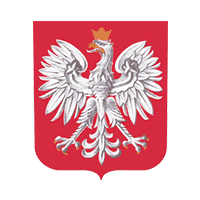Wiesław JAKUBIAK
Open-pit mining is characterized by a relatively low accident rate. Between 2017 and 2021, the ratio of accidents reported in open-pit mines to the total number of accidents in domestic mining did not exceed 3%, and the total accident rate per 1000 employees was 1.57 to 1.98. Out of 23 lethal and major accidents in open-pit mining in the said years, the majority was recorded in facilities mining natural aggregate from underneath the water table (46.15%) and from non-hydrated deposits (23.08%). 35% of them happened as a result of direct contact with rotating or moving equipment parts. Other causes of major accidents (15%) include incorrect movement of staff around moving machinery and falls from height. The remaining causes include drowning and machinery operators being covered in with soil (12%). Therefore, the “human factor” is the dominant cause of these accidents, and in 2017 and between 2019 and 2021, it was responsible for 100% of deadly and major accidents (and for 75% in 2018). Near-misses are another noteworthy aspect. Although they do not result in injuries, they are potentially dangerous events. Consequently, between 2017 and 2021, there were: 14 landslides, 1 flooding of the pit with flood water, 11 fires, and 6 cases of rock bit splatter outside the safe zone in open-pit mines. The recorded accidents point to faults in the organization of work and in the use of machinery and equipment, including: lack of safety measures and movable guards on machine elements, incorrect preparation of the work area (shielding, separation, removal of dangerous elements, use of personal protective equipment), incorrect marking of dangerous areas. The overall safety level is therefore greatly affected by the organization of work, including limited access to rotating machinery and dangerous areas, or supervision of ongoing works and proper selection of operations and maintenance technology. It is also the employer’s responsibility to prevent near misses by employing adequate measures, including training personnel in occupational health and safety, existing hazards, and verifying their skills learned during training.
Dawid ROJEK, Krzysztof MILEWSKI, Adam KOCZY
The article presents the practical usage of PUMPSIM - 3D Pumping Simulation Software which simulates the flow of liquids for fast and accurate analysis of various possible pipeline network design options, control of network parameters and drainage pump selection. This software is an effective tool for design and simulation both for water supply lines for designed mine faces and longwalls, and for networks used for draining water from pits. When expanding fire extinguishing and drainage networks without using similar tools, it is not possible to perform fast and accurate calculations, due to their high level of complexity. However, employing computer software, one can verify several possible solutions in a short time, and pick the most beneficial one. Entering data in the software, one can simulate various solutions to individual problems, while estimating their costs. The article presents several examples of use of modern numeric methods in simulating fire extinguishing and drainage pipeline networks, created by the technical service at KWK “Borynia-Zofiówka” using the said software.
Stefan GIERLOTKA
The effects of engineers’ work are their main source of wealth. In the post-war period, engineers were perceived as the main factor in economic development, and enjoyed a high repute. In giving students their well-deserved diplomas, universities provided a recommendation for their knowledge and skills. What we are witnessing today is mass higher education and the decline of engineer professions. Light, easy and pleasant courses have become in fashion, and semi-humanistic majors have been organized in technical universities. At the same time, the industry craves for high-skilled engineers, with vast knowledge in mathematics, physics and general technical sciences. Practice in the profession is also very important. Today, an engineer’s diploma does not give you any guarantee. The ethos of engineer was replaced by prestige based on money and wealth. Engineers’ accomplishments are taken as a given, whereas the media only tend to focus on their failures (disasters, breakdowns). It is very rare that an outstanding engineer gains the recognition of their contemporaries. However, these are the works of engineers that have transformed the world, making the current living conditions better than before. Few people today can tell who e.g., John Bardeen was. However, if it wasn’t for his transformer, there would be no radio, TV, mobile phones, GPS or computers. Yet, the inventor of this breakthrough device remains anonymous.



